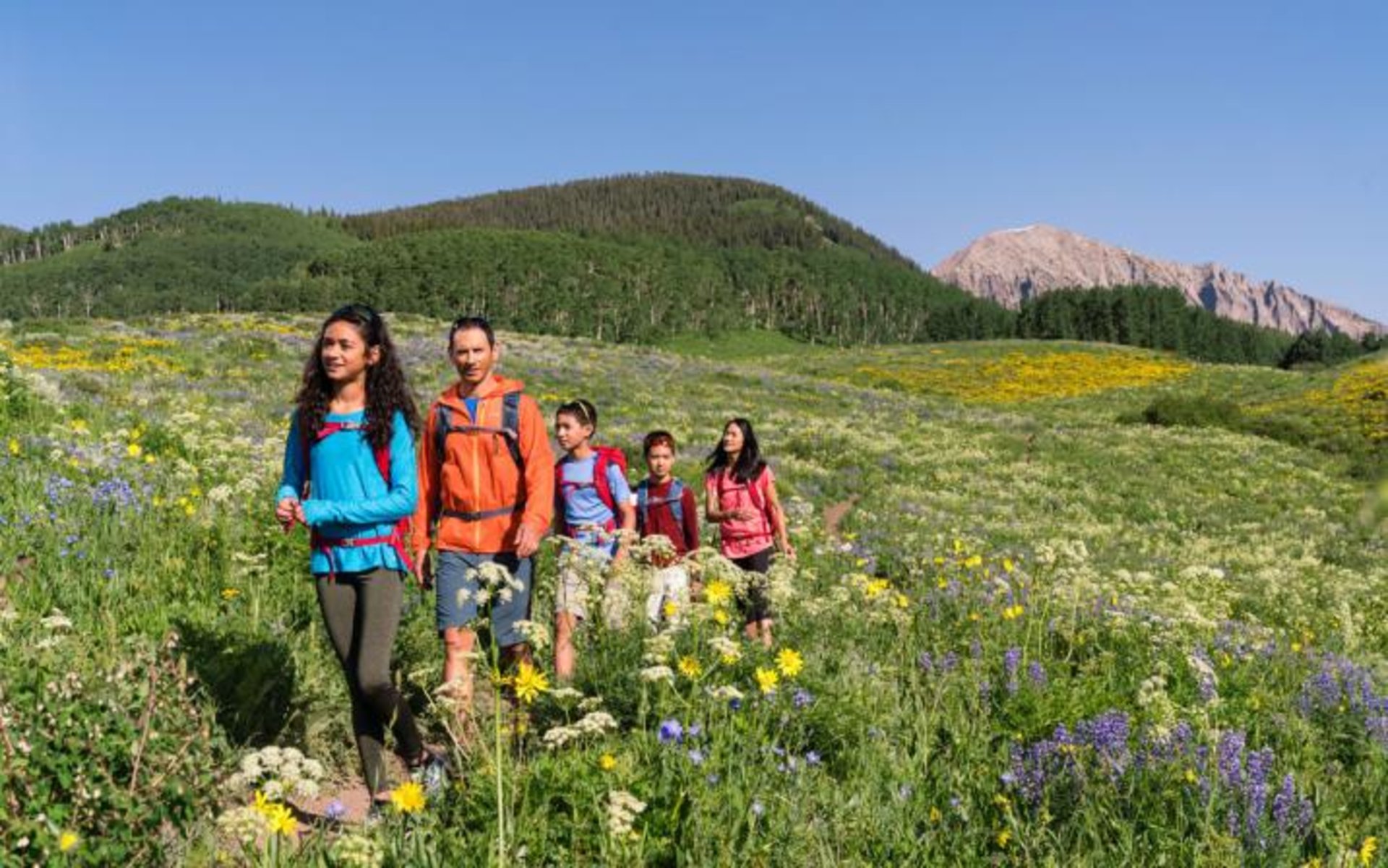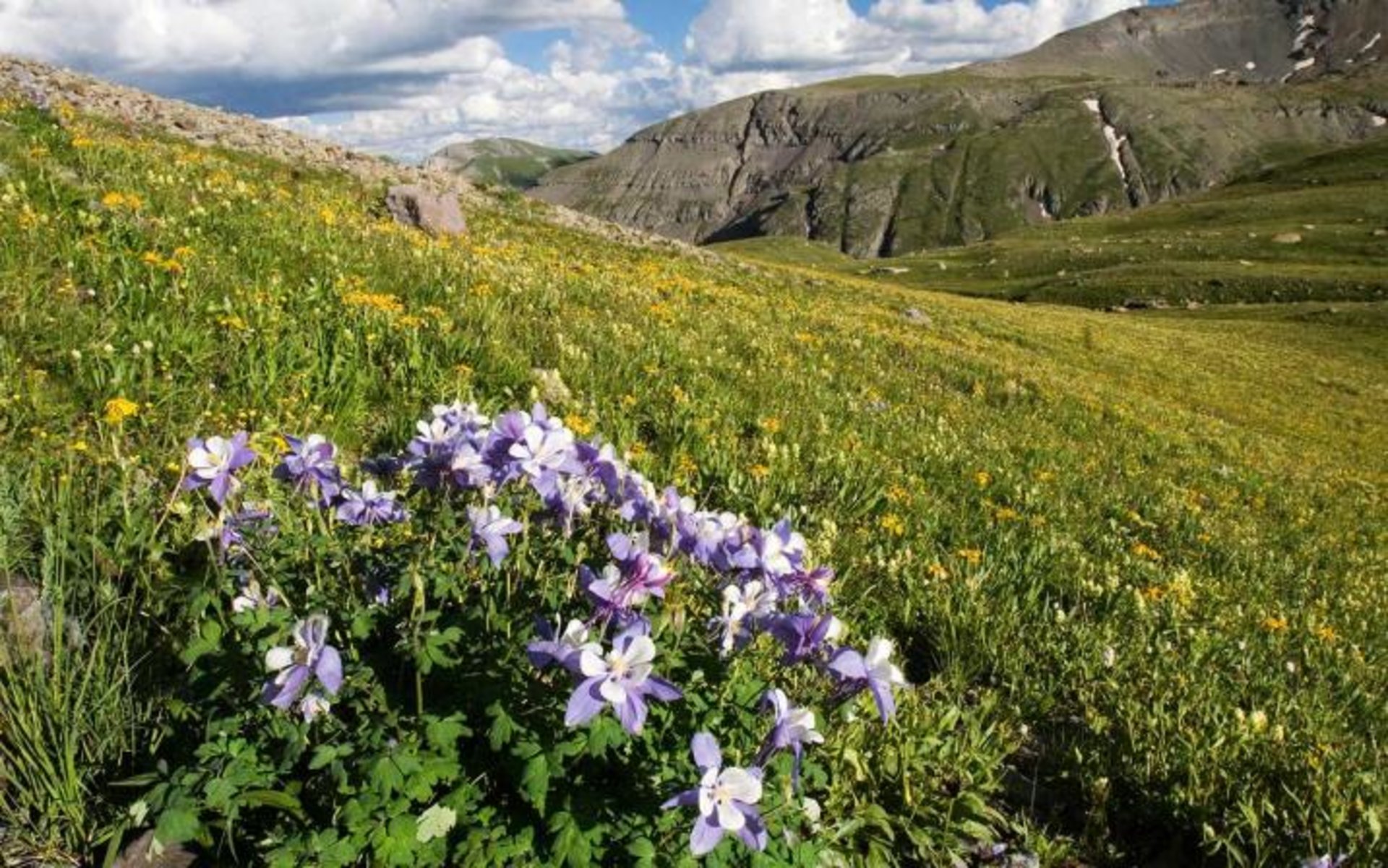5 Colorado Wildflower Hikes

Alpine meadows are home to some of Colorado's most bright and beautiful wildflower collections. A wildflower stroll in these meadows, such as Roxborough State Park near Denver, can be one of the most relaxing spring and summer activities.

When to Go on a Colorado Wildflower Hike
In April and May, wildflowers on Colorado's eastern plains begin to spread their petals. Wildflowers don't normally bloom until July and August in western Colorado's Rocky Mountains, where snow often doesn't melt fully until mid-June or later. Because of the late bloom, the vibrant show is generally concentrated and abundant. The peak of this flowering season, which occurs at altitudes ranging from 8,500 to 14,000 feet, usually occurs around the Fourth of July.
1. Willow Creek Trail, Roxborough State Park
The scenery of this 3,245-acre state park is dominated by red rocks and wildflowers, with a complex and distinctive biodiversity. This area is referred to as a transition zone because it captures the natural shift from the plains to the magnificent heights of the Rocky Mountains. Because of the diverse habitat, certain varieties of wildflowers that would normally be miles away can be seen growing close together. Because of its proximity to Denver, this park is very popular. It's a great place to get away from the city and reconnect with the peaceful beauty of Colorado wildflowers as a day-use park.
Willow Creek Trail
Willow Creek Trail, Centennial, CO, USANearby Cities: Denver, Littleton, Sedalia, Castle Rock
Flowers You’ll See: Canada violet, larkspur, golden banner and chiming bells, poppy mallow, orchid penstemon, sego lily, American vetch, cinquefoil, Drummond milkvetch, purple milkvetch, sulphurflower, tall scarlet paintbrush, orange paintbrush, scarlet gaura, white gilia, scarlet gilia, prairie coneflower, copper mallow, spring beauties, silvery lupine, birdfoot violet, purple prairie flower, white prairie flower, green gentian
Prime Bloom Time: Early May through June
2. Alpine Loop Scenic Byway
Take the Alpine Loop Scenic Byway if you want to see wildflowers amid Colorado's actual wilderness. Only a 4x4 vehicle with high clearance can access this rugged terrain, which is ideal for cultivating a variety of wildflowers. It's critical to stay on all recognized routes at all times; getting stranded is a typical event for off-roaders. The route comprises a 63-mile stretch of unimproved road that climbs to elevations of 12,800 feet. There are numerous hiking opportunities along the way, so get out and explore. Keep in mind the "Stay the Trail" rules of thumb when riding OHVs to protect the Alpine Loop's sensitive terrain.

Alpine Loop Start
Ouray, CO 81427, USANearby Cities: Silverton, Lake City and Ouray
Wildflowers You’ll See: Tufted hairgrass, alpine timothy, bog sedge, rushes, bistort, Colorado blue columbine, avens, larkspur, gentian, geranium, Jacob’s ladder, monkshood, catchfly, phlox and bluebells
3. Rabbit Valley Recreation Area
Rabbit Valley Recreation Area is located near the Colorado River. In the semi-arid environment, high-mountain desert topography dominates an area of 24 square miles. Wildflowers, which thrive among wind-sculpted sandstone, provide a delightful splash of color. And, despite the conditions, these floral plants are as tough as they are colorful. This region is managed by the Bureau of Land Management, and you can enjoy wildflowers in a variety of ways. Take a horseback ride across the area to see the vast vistas from the comfort of your mount. Alternatively, you can hike it on one of the numerous kilometers of hiking routes in the region. Then unwind at one of three allocated campsites after a long day.
Rabbit Valley Campground
Mack, CO 81525, USANearby City: Grand Junction (follow I-70 west to the Rabbit Valley exit. Turn left over I-70. Follow the road a short way until you reach Rabbit Valley)
Wildflowers You’ll See: Mariposa lily, double bladderpod, globemallow, Jones’ blue star, glandular phacelia and grand buckwheat
Prime Bloom Time: Late April to June
4. Cathy Fromme Prairie Natural Area
In this naturalist's paradise, development and industry have been kept at bay. Many of the area's panoramas show what the land's original European settlers saw: pure, unadulterated Colorado prairie. Along with the vivid wildflowers, you might see a bald eagle or hawk, which are frequent visitors to the area on the hunt for prey. The paved Fossil Creek Trail is a 2.4-mile trek through the prairie that is readily traversed. As you go down this path, you'll come across a variety of interpretative markers that provide information on the area.
Cathy Fromme Prairie Natural Area
2001 Overlook Dr, Fort Collins, CO 80526, USANearby City: Fort Collins (one mile south of Harmony Road on the west side of County Road 17)
Flowers You’ll See: Nuttall’s violet, upright prairie coneflower, milkweeds, narrowleaf stoneseed and beardtongues
Prime Bloom Time: June through August
5. Goose Creek and Molly Gulch
Granite hoodoos and rock arches used to be the area's most distinguishing characteristic. Today, it's a thriving landscape that has recovered from wildfire. The horrific Hayman Fire of 2002 left an indelible mark on the more than 100,000 acres it burned. A plethora of wildflowers bloom in the burned remains of a scorched woodland, proving that beauty can emerge from ashes. Thankfully, the fire did not spread throughout the entire area. The lush green hiking routes contrast sharply with the burned trails. Make a two-day camping vacation out of it to take in the beauty. Near Goose Creek, there are rustic tent-camping sites on the trails.
Nearby City: Deckers on Highway 126. Turn west on Matukat Road for roughly eight miles.
Flowers You’ll See: Smooth aster, yarrow, bellflower, blanket flower, bergamont, fireweed, nodding onion, spreading dogbane geranium, honeysuckle, blazingstar, Woods’ rose, Canada violet and black-eyed Susan
Prime Bloom Time: April through early June
Have Story To Share?
Blog with Trip.Social

Reach new audiences and maximize your potential.